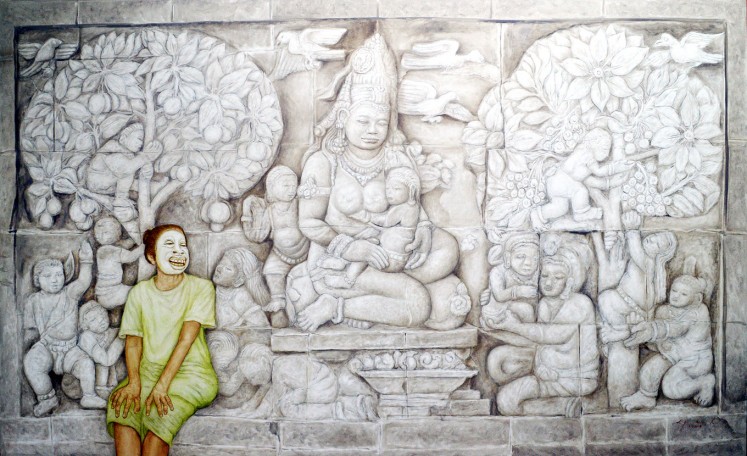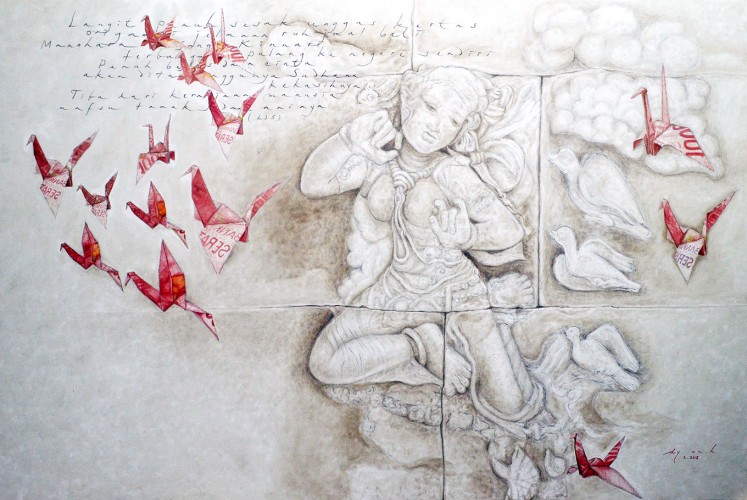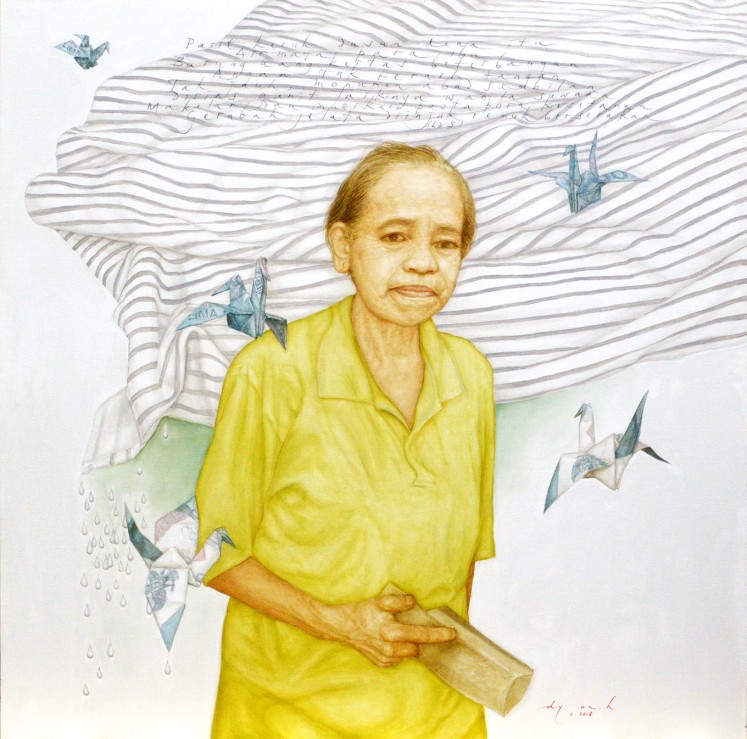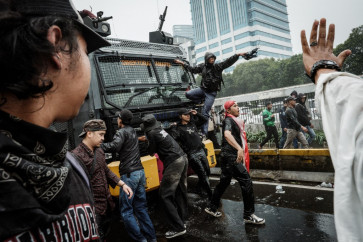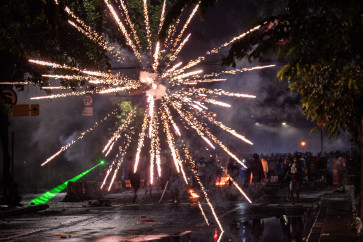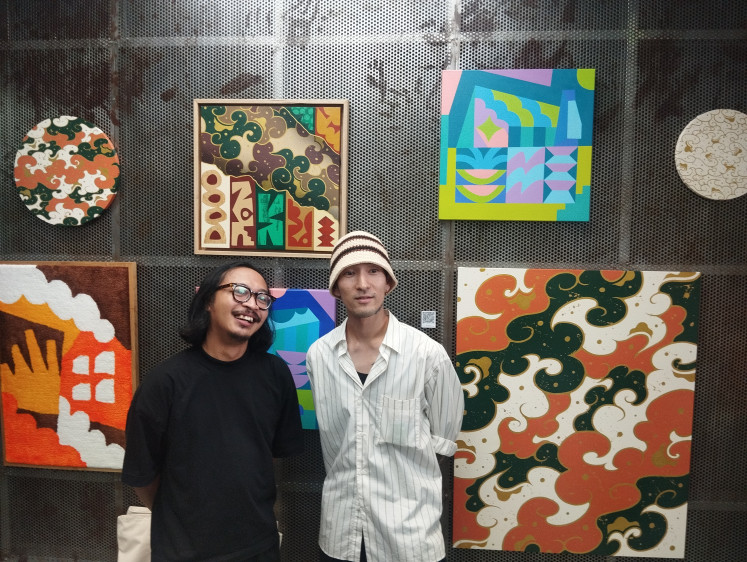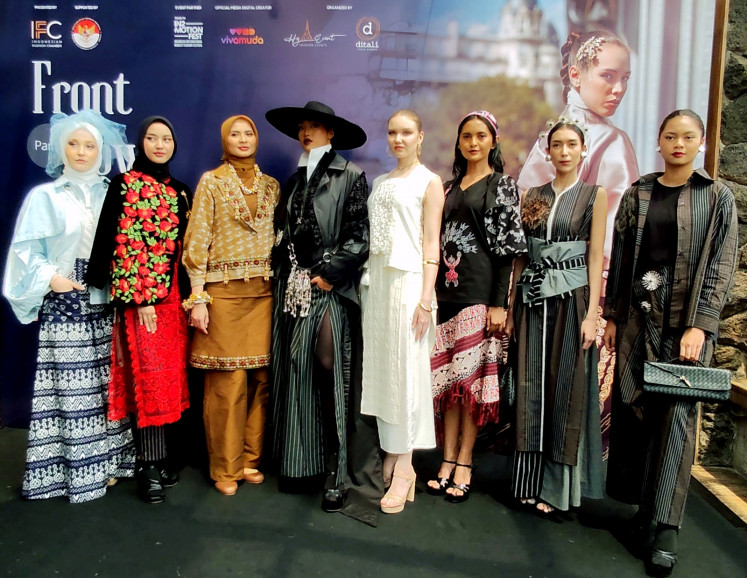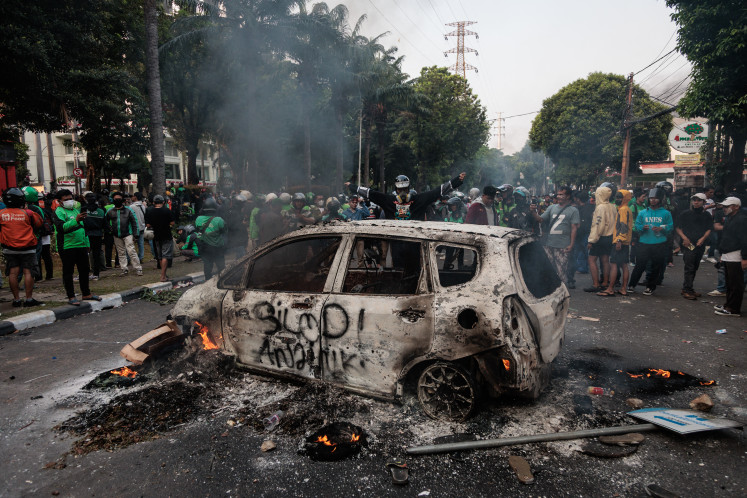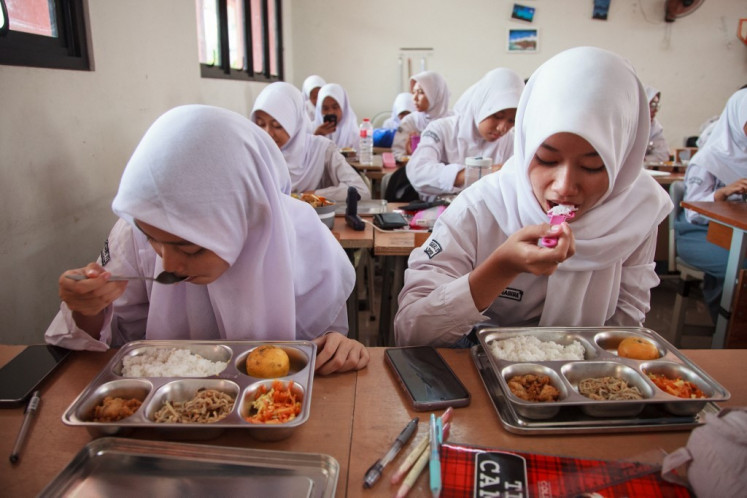Popular Reads
Top Results
Can't find what you're looking for?
View all search resultsPopular Reads
Top Results
Can't find what you're looking for?
View all search resultsAn ode to the unsung heroines of Borobudur
When artist Dyan Anggraini cries out in frustration, she does so with restraint, and her voice even goes mum, to ultimately explode on canvas and sculptural installations.
Change text size
Gift Premium Articles
to Anyone
A
n exhibition of 37 works by Dyan Anggraini at the National Gallery of Indonesia follows the path of meditative reflection exalting the creative process underlying the building of Borobudur temple.
Addressing an art historical vacuum that has largely excluded women, Dyan’s works are like an ode to the unsung heroines of the glorious temple in Central Java.
The women potters from the neighboring Klipoh village and environs appeared to have been the backbone of the temple’s construction workers as they took care of their daily food intake. Yet, there is no written record of their work.
Inspired by the enormous gap between the Klipoh women and those in the reliefs, Dyan — in her works — juxtaposes today’s women living around the temple with the reliefs that are revealed in stone.
“I spoke to these women and it’s their oral history that impressed me deeply,” Dyan said. At the time of Borobudur’s construction, women took care of cooking the food for the workers and they also made household utensils.
“I was struck by the overwhelming [hidden] role of these women that conspicuously contrasted to the images of women in the 1,500 reliefs at Borobudur,” said Dyan, whose research during the past three years included visits to villages in the vicinity.
Transformasi (Transformation) by Dyan Anggraini (National Gallery of Indonesia /File)The lives of those women in Klipoh came to mind when looking at the reliefs at the temple, which are mostly dominated by women.
There are 1,500 panels at Borobudur, according to Suwarno Wisetotromo who is the curator of the exhibition entitled “Perempuan (di) Borobudur” (Women (in) Borobudur) that runs until March 5.
Using striped blankets to denote the poor, Dyan makes a powerful statement about the enduring inequality in society.
Likewise, the paintings of women with paper birds made from bank notes flying away refer to the women of Klipoh who continue to live in economic hardships and are still deprived from enjoying the benefits of the site’s thriving tourism industry.
While the soft colored paintings are revealing of how the artist views the reliefs through today’s lens, and perhaps touch our hearts, it is her installations that make a huge mark as Dyan excels in making the intangible, tangible.
A case in point is the installation Geram (Upset), in which refined aesthetics make the notion of frustration and exasperation poignantly felt. From afar, the installation looks beautiful and even on closer inspection the hands squeezing pieces of paper are presented in an utterly refined manner. In fact it is so beautiful it almost hurts to look at it.
The same is true for her installation entitled Jerit Terjerat (Entanglement) in which hands entangle with cloth in exasperation.
Terbang Pulang (Flying Home) by Dyan Anggraini (National Gallery of Indonesia /File)That such frustration can result in huge explosions has been noted in the chronicles of time. In this exhibition, Dyan refers to the Javanese Tiwikrama, a point when a person metamorphoses into giant with fearsome attributes.
Tiwikrama in this exhibition is featured as a fearsome giant with multiple arms and masks flying around, the personification of exploding anger.
It may well be a self-portrait of Dyan, whose soft-spoken and fragile appearance belies a strong character and great energy with the ability to evoke a metamorphosis of sorts.
Perempuan Gerabah (Crockery Woman) by Dyan Anggraini (National Gallery of Indonesia /File)Interestingly, writer and poet Landung Simatupang was inspired to write some poems pertaining to Dyan’s works. She then obliged by placing the handwritten poems across her sculptures.
This is Dyan’s 9th solo exhibition since she started her professional career as an artist in the mid-1970s. A student of the Taman Siswa School, which promotes progressive education of equality and nationalism, Dyan’s oeuvre has consistently pursued such idealism using various means such as paint, resin, embroidery, drawings, etchings and the like.
It is an important momentum in the history of women artists in Indonesia, when the Borobudur reliefs are taken as a contemporary gender issue. It is somehow a follow-up on the works some decades ago by Inda Citraninda Noerhadi who at the time painted the darker side of women’s lives and the violence marking women’s lives in the reliefs of Karmawibangga.


